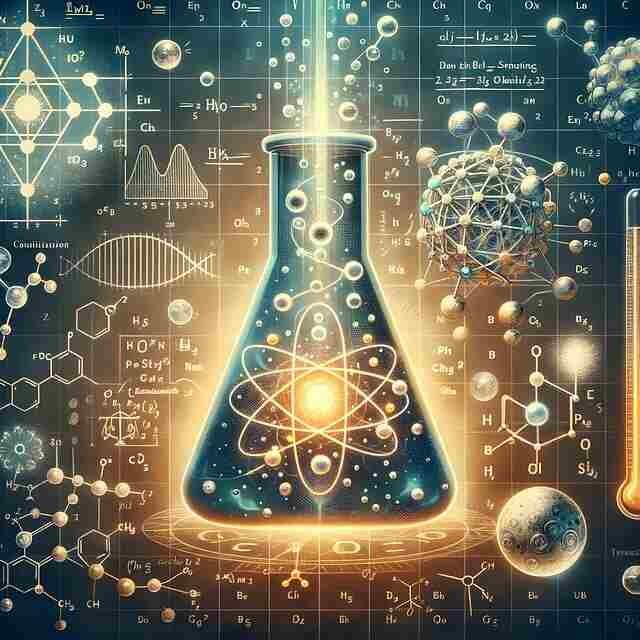Where Does Nuclear Radiation Come From?
Nuclear radiation or ionizing radiation type is invisible, odorless and tasteless. Therefore, a radioactive emission can only be detected using specific measuring equipment.
Radioactivity is a phenomenon that often alarms because it is assimilated to disasters. However, it is everywhere present in its natural state, but in small quantities. Uranium 235 and 238 contained in the earth, carbon 14 in plants and animals or even potassium 40 in our food are all natural radioactive elements present in our daily environment: this explains why we are, ourselves, radioactive.
The unit of measurement for radioactivity, the Becquerel (Bq), corresponds to the emission per second of a physical particle (proton, neutron, electron, etc.) or radiation (X, gamma), whatever be its nature. A 75 kg man thus emits 6000 Becquerels (Bq), just like a 1 kg of granite pavement. A kg of bananas only emits a hundred Bq. For one kg of food, it is accepted that below 1000 Bq, radioactivity is considered harmless.
Read also: Ionizing Radiation Summary of Alpha (α), Beta (β), Gamma (γ) Radiations and Neutron
The origin of this radioactivity
To understand the origin of this radioactivity, you have to dive briefly into the heart of matter and the atoms that constitute it. These are often represented by their nucleus around which small particles revolve: electrons. The nucleus of atoms is itself made up of other particles, protons and neutrons, which when they are too numerous make the atomic balance unstable.
Radioactivity reflects the tendency of “too heavy” atoms to spontaneously regain greater stability by losing part of the components of their nucleus, i.e. by breaking into two often unequal parts (nuclear fission), or by emitting alpha (helium nuclei), beta (electrons) or gamma (photons) radiation.
These radioactive emissions or decays decay over time at a steady, unchanging rate. The term “radioactive decay period” (or half-life) is the time after which the amount of decay (radioactivity) is reduced by half. Each radioactive nucleus has its own period.
During a fission, the consequences are not the same. Uranium 235 has the property of being able to split into two lighter atoms under the action of neutrons, which then releases considerable energy… which in turn releases other neutrons liable to create the fission of other nuclei: it’s a chain reaction.
Such a chain reaction can be used to produce a devastating explosion in the case of an atomic bomb, or be mastered in a reactor to generate electricity.
How are radioactive elements contained in a nuclear reactor?
A reactor contains a hundred tons of nuclear fuel, enriched to a few % in uranium 235. This fuel remains in a reactor for two to three years.
In addition to the energy released during the initial uranium fission reaction, radioactive emissions produce a lot of heat, so a reactor must be cooled continuously, even after it has stopped, which paradoxically requires an independent contribution in electricity.
The nuclear fuel is confined behind three barriers: the sheath of the fuel “rods” (the uranium is put in the form of pellets, stacked in a “rod” placed in a sheath; an assembly is made up of a batch of sheathed rods), the reactor vessel wall and the concrete containment enclosure.
Serious attacks on these barriers can occur: in Chernobyl, it was the physical explosion linked to errors in the management of the reactor, with opening of the vessel; in Fukushima, a meltdown after the cooling failure of the shutdown reactor after the earthquake and the flooding by the tsunami. The fission products are then released into the environment and therefore have an impact on health.
Radiation | Classification and Type: Electromagnetic, Ionizing and Non-ionizing, Particle
Sources of nuclear radiation include:
- Natural Sources: Radioactive elements like uranium, thorium, and radium naturally exist in the Earth’s crust, and their decay products emit radiation. Additionally, cosmic rays from the sun and other celestial bodies can also generate radiation.
- Man-Made Sources: These include nuclear power plants, where controlled nuclear reactions produce electricity and create radioactive waste. Medical procedures involving radiation, industrial processes, and nuclear weapons testing also contribute to artificial sources of nuclear radiation.
Conclusion
Nuclear radiation originates from the nucleus of an atom. It’s emitted in the form of particles or electromagnetic waves when unstable atomic nuclei undergo a process called radioactive decay.
This decay occurs in radioactive elements where the nucleus is unstable due to an imbalance in the number of protons and neutrons or excess energy within the nucleus. To achieve stability, these nuclei release radiation in the form of alpha particles (composed of two protons and two neutrons), beta particles (high-energy electrons or positrons), gamma rays (high-energy photons), or sometimes neutron emission.
Sources: PinterPandai, National Nuclear Regulator, CDC, U.S. Nuclear Regulatory Commission (NRC), AtomicArchive
Photo credit: prestige_photography via Pixabay
Effects of nuclear explosions on human health (Intentionally or Accidentally)

